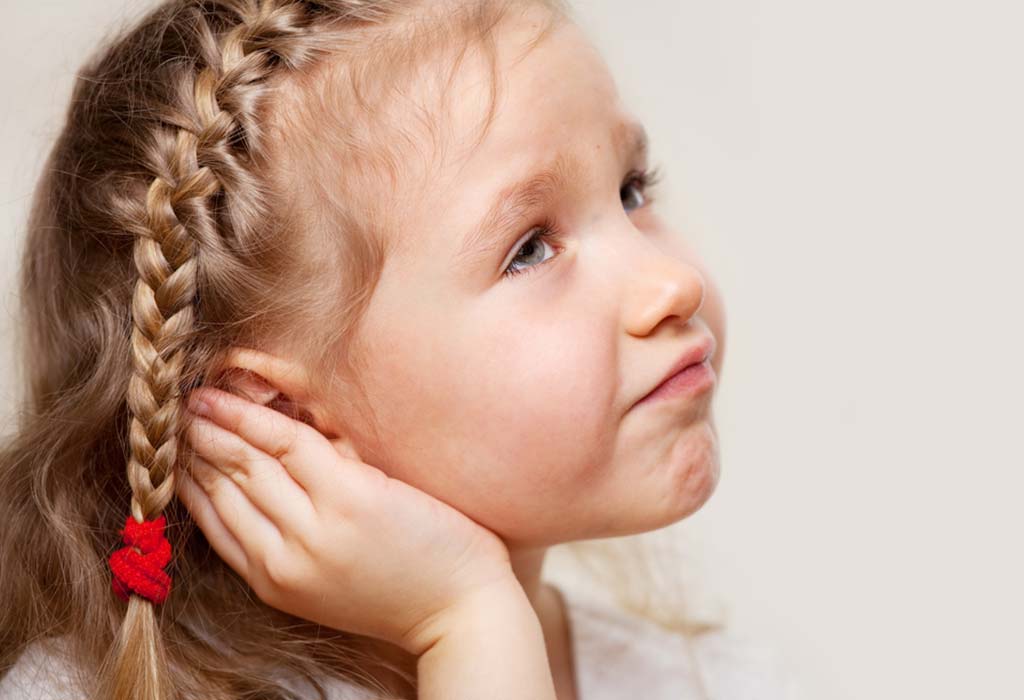We, as adults, often overlook any ache that we experience thinking it to be insignificant. But when it comes to our children, the tiniest of discomfort causes immense unrest in us. We leave no stone unturned in providing our kids with the care that they require, whether it’s a slight cold or a severe ache.
One such pain that children commonly suffer from is an ear infection. Although the degree of pain may vary, it definitely causes irritation and discomfort, sometimes, leaving parents helpless. To provide the assistance your child would need, a better understanding of the illness is essential. Therefore you can visit paediatrics in Pune for such assistance.
Page Contents
Identifying The Type
To treat any illness, the first step is to identify it well. To treat Ear Pain, it is necessary to understand what type of pain your child is suffering from. Ear pain can be categorized into two types: Acute Otitis Media (AOM); and Otitis Media with Effusion (OME).
Acute Otitis Media as the name suggests refers to acutely infected fluid behind the eardrum. Otitis Media with Effusion, on the other hand, is when there is fluid in the middle ear that is not infected. Since both these types are often associated with viral upper respiratory infections they occur in winter, fall, and spring. Most children encounter AOM at least once before their second birthday and OME before their fifth. Hence, being prepared with all the information in advance could quicken the healing process for your child. Visiting paediatrics in Pune can help you understand the problem.
Causes
When bacteria or viruses infect or trap fluid behind the eardrum, it leads to an ear infection. The infection is usually in the middle ear as a result of the swelling up of the eustachian tube. Children have shorter, more horizontal eustachian tubes leaving them vulnerable to bacteria and viruses that easily make their way to the middle ear. However, it is important to note that every ear pain may not necessarily be an ear infection. There are other causes such as teething that may cause ear pain in children.
Risk Factors
Apart from the above-mentioned causes, there are a few risk factors that may cause the eustachian tube to swell and result in an ear infection:
- Cold: A child’s immune system is not completely developed as an adult’s leaving them more prone to colds. A child with a cold may suffer from ear pain which could be a symptom of an ear infection.
- Throat inflammation: Usually a cold is accompanied by the inflammation of the throat or in general terms, a sore throat. As the throat and ear are connected, discomfort in one will cause a problem in the other as well. Throat inflammation could block the ear and cause discomfort.
- Allergies: Seasonal allergies or just allergies, in general, are another risk factor as they cause inflammation. The inflammatory compounds that allergies cause to release affect the lining of the ears, which could eventually develop into an infection. If your child is facing such issues, do visit paediatrics in Pune immediately.
- Secondhand smoke: Since ear infections are associated with upper respiratory infections, as mentioned earlier, exposure to smoke could increase the risk of an ear infection. We are aware of the damage smoke can cause to our entire respiratory system.
- Use of pacifiers: As helpful as they can be, pacifiers can cause more damage than one realizes. Pacifiers should be avoided for babies above six months as they can increase the risk of an ear infection.
- Bottle feeding: While feeding babies it is important to place them in the correct position. Maintaining an upright position is essential. Lifting the bottle as it lays flat may not only cause discomfort but may also lead to ear pain which could manifest into an infection.
For More health tips visit HEALTH CURE PLUS
Symptoms of Ear Infection
The symptoms of AOM and OME differ. The following are the symptoms that surface when a child is suffering from Acute Otitis Media:
- Ear pain
- Fever
- Sleeplessness
- Irritability
- Headache
- Fluid drainage from the ear
Otitis Media with Effusion may not have definite symptoms and may differ from child to child. However, one common symptom is the loss of hearing. This loss of hearing could cause irritation and fussiness which are similar to the symptoms of AOM. It is not easy to diagnose OME as the child may or may not experience ear pain. Hence, OME calls for more attentiveness.
Treatment
Acute Otitis Media is easier to treat as compared to Otitis Media with Effusion. In the case of AOM, oral antibiotics and immense patience is required. Once the child consumes antibiotics, a patient watch needs to be kept on them. No quick relief is guaranteed but the infection will surely cure over time with antibiotics.
The treatment of OME, on the other hand, depends on whether the child is experiencing ear pain or not. If there is no ear pain bothering the child, OME could be cured spontaneously under an attentive watch. However, if the child faces discomfort and suffers from ear pain, medical treatment is required. You can easily find paediatrics in Pune for the job and get the required medical attention immediately.
When To Visit A Doctor/Book Online Doctor Consultation
Acute Otitis Media is usually cured with the help of antibiotics and does not entail the risk of any complications. Complications such as the infection spreading to the skull bone or the brain were observed way before antibiotics were developed and required urgent surgery.
These days with the advancement in Medical Science, the risk of these complications are close to zero. OME, when it begins to interfere with the child’s speech pattern, requires immediate medical attention. Ear tubes are used to treat severe cases of OME. You can go for online doctor consultations for immediate remedies.
Ear pain in children is common. It could be a result of several factors. Identifying the cause is vital as it could be an ear infection. Panicking would only delay the process of cure. Instead, parents should be well informed about ear pains and infections so that when the situation arrives they are well-equipped with information and know exactly what to do.



